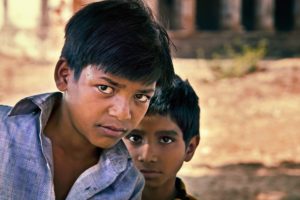Written by S Shiva (Sri Lankan Reporter)
What is Child Sexual Exploitation?
Child Sexual Exploitation (CSE) is the act of using children (persons aged under 18 years) for sexual purposes through a material or non-material exchange between the abuser, and the child or an adult acting as an intermediary. This exchange could be of money, services, sensitive information, secrecy or even an emotional exchange such as love or care. Eg: Child Prostitution, Child Sexual Exploitation Online using sensitive images as blackmail material.
Sexual abuse and exploitation may be ignored in situations where the priority is to protect family honour. In many parts of South Asia, marrying off a girl who has been sexually abused is nearly impossible. As a result, reporting of sexual abuse and exploitation tends to be low since it potentially damages the girl, rather than the perpetrator. In Bhutan, only 1 in 10 children were found to share their experiences of sexual violence and harassment, and primarily with peers. In Afghanistan, girl victims of sexual abuse may be re-victimised as the violation they have suffered may put them at further risk of honour killing or forced marriage to their rapist. Overall, in the region, several issues around sexuality are considered taboo, especially when relating to unmarried women.
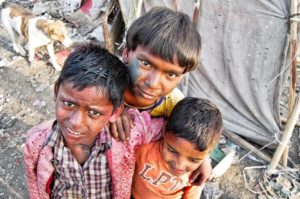 What makes South Asia more vulnerable?
What makes South Asia more vulnerable?
The countries of the South Asian regions, such as India, Nepal, Sri Lanka, Bhutan, Bangladesh, Afghanistan, Pakistan and Maldives, are third and fourth world countries for the most part. Though not the poorest region – poverty is still a major problem, and these countries are often driven by this factor. Many of their people end up giving up their future to feed their immediate needs. They also don’t have the legal infrastructure to deal with major crime rings and the corruption that comes with their activities. Child Labour is a common crime in the region, and such activities are a breeding ground for child sexual crimes committed on innocent children forced into hard labour through poverty and/or cruelty.
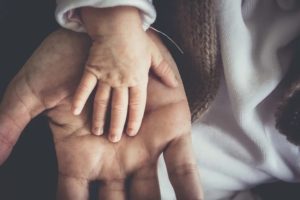 Though Child Sexual Exploitation in its various forms are deemed grave crimes in almost all South Asian countries, the laws that state this leave many loopholes in their Penal Code and the sentences for the crimes are minimal compared to most of the western world.
Though Child Sexual Exploitation in its various forms are deemed grave crimes in almost all South Asian countries, the laws that state this leave many loopholes in their Penal Code and the sentences for the crimes are minimal compared to most of the western world.
In addition, many of the South Asian countries are formed of Indian sub-cultures from a period when India covered a much vaster land area. These cultures place greater importance on the adult male figures in families. Children and women are considered disposable assets of little importance and are often used to make money if the opportunity arises, even when such opportunity is of illegal means. Ignoring the feelings, fears and opinions of children are considered a normal way of life. Children are traditionally expected to obey their elders regardless of the cost, and those who disobey are forced and punished. Similarly, if a crime occurs where children are victimized, the child victim is considered to be the one in the wrong and punished for ruining the reputation of the family.
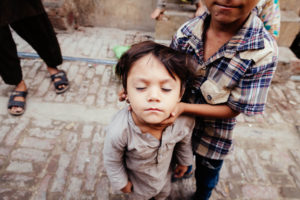 The rapid urbanization with insufficient penetration of modern technology among the rural societies of South Asia has allowed shadowy child sexual crime rings a solid hold on the innocent and naive children who live in these areas. They lack the protection of their parents who are not able to understand the risks of their children using mobile phones and laptops without their oversight.
The rapid urbanization with insufficient penetration of modern technology among the rural societies of South Asia has allowed shadowy child sexual crime rings a solid hold on the innocent and naive children who live in these areas. They lack the protection of their parents who are not able to understand the risks of their children using mobile phones and laptops without their oversight.
A number of humanitarian crises and civil wars have also plagued these areas, which lack the social and financial infrastructure to recover from them on their own. As a result the children of South Asian regions are found to be more vulnerable to perpetrators both from their localities and from overseas. They fall prey to many forms of CSE; especially child marriage, child sexual exploitation through travel and tourism and child sexual exploitation online.
Victimisation is also common in boys. As families normally consider their sons more capable of protecting themselves, they tend to deny the sexual abuse of boys, as well as consensual sexual relationships between males. Such cultural attitudes may partly explain why the sexual abuse of boys is even more under-reported than that of girls.
South Asian gender discrimination, perpetuated through ingrained social norms, is often formalised in the law. Afghanistan, Bangladesh, India and Pakistan require lower age at marriage for women as compared to boys. In Afghanistan, Bangladesh and Pakistan, the law legitimises control over a woman’s body and does not account for gender-based violence. It obligates a woman to fulfil her husband’s sexual desires and denies the woman’s – and the girl’s – rights to consensual sex and to seek redress for marital rape.
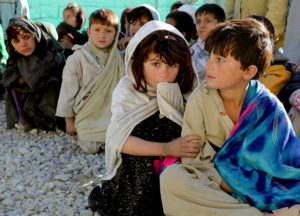 Regional Statistics on Child Sexual Exploitation
Regional Statistics on Child Sexual Exploitation
Child Labour and Slavery
While economic growth in the South Asian region has been considerable, this growth has been restricted to the richer members of the society, while the others who consist of over three quarters of the population struggle to overcome poverty.
Substantial variation in child labour estimates exist across the South Asian countries. In absolute terms, child labour for the 5-17 years age range is the highest in India (5.8 million), followed by Bangladesh (5 Million), Pakistan (3.4 Million) and Nepal (2 Million)
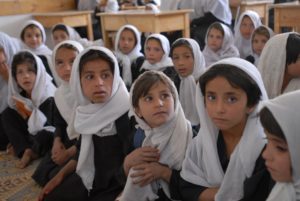 According to the Global Slavery Index of 2018, Afghanistan and Pakistan have some of the highest records of human slavery. Afghanistan, in specific, has over 2% of the actual population living in slavery, while over 90% of the population are at risk. The Index states that in the Asia and Pacific regions overall; at least 6 people out of every 1000 are undergo modern slavery, 4 people out of every 1000 undergo forced labour being the largest prevalence in the world, and 2 people out of every thousand undergo forced marriage. A large number of children are included in this count. The index puts them right behind the African region for the prevalence of such slavery indicators – showing the vulnerability of the region.
According to the Global Slavery Index of 2018, Afghanistan and Pakistan have some of the highest records of human slavery. Afghanistan, in specific, has over 2% of the actual population living in slavery, while over 90% of the population are at risk. The Index states that in the Asia and Pacific regions overall; at least 6 people out of every 1000 are undergo modern slavery, 4 people out of every 1000 undergo forced labour being the largest prevalence in the world, and 2 people out of every thousand undergo forced marriage. A large number of children are included in this count. The index puts them right behind the African region for the prevalence of such slavery indicators – showing the vulnerability of the region.
According to ILO, the lowest estimates show that at least 17 million children from the South Asian region undergo child labour, while the entire Asia Pacific Region has the largest number of child laborers.
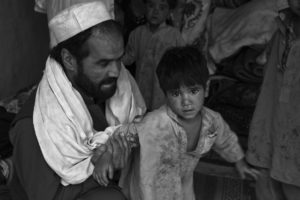 Child Sexual Exploitation in Travel and Tourism
Child Sexual Exploitation in Travel and Tourism
Another major risk within the region has been the seasonal migrations of nomadic tribes, which put children at risk to sexual exploitation while they travel and from other travelers. Over 4-6 million children in India are believed to be seasonal migrants.
Meanwhile boy prostitution was found to be more prevalent in Sri Lanka, with major child prostitution rings that are said to manage the crime activities. Over 40,000 child prostitutes have been found in the country according to some reports, with over 30,000 of them undergoing child sexual exploitation in travel and tourism.
Child Sex Trafficking is also a highly prevalent crime in South Asia. Children as young as 10 are trafficked across the Gulf in Pakistan, while over 67,000 children went missing in India from 2013 to 2014. 45% of these missing children were trafficked for prostitution.
In Bhutan, 1 in 10 children have been found to undergo some form of sexual violence in their childhood. Many of these children are forced into prostitution.
Online Child Sexual Exploitation
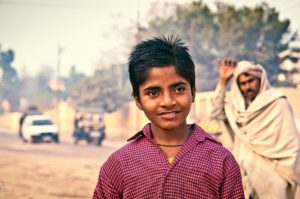 Online Child Sexual Exploitation is a relatively new crime that is still not receiving the intense attention it should in the South Asian region. To put it in context, according to a study done by UNICEF on ‘Keeping Children in Sri Lanka Safe and Empowered Online’; over 50% of Sri Lankan children aged, between 11 and 18, have access to digital devices and the internet. From a sample group of 2560 children interviewed for the study, over 10% had exchanged texts, images or videos suitable for adults and over 40% had been in contact with strangers online. In addition, of those who were online 28% met up with strangers offline after first contact online, while another 25% planned to meet up in the near future. And yet, only just above 2% children were aware of what they should do if they were to fall prey to child sexual exploitation.
Online Child Sexual Exploitation is a relatively new crime that is still not receiving the intense attention it should in the South Asian region. To put it in context, according to a study done by UNICEF on ‘Keeping Children in Sri Lanka Safe and Empowered Online’; over 50% of Sri Lankan children aged, between 11 and 18, have access to digital devices and the internet. From a sample group of 2560 children interviewed for the study, over 10% had exchanged texts, images or videos suitable for adults and over 40% had been in contact with strangers online. In addition, of those who were online 28% met up with strangers offline after first contact online, while another 25% planned to meet up in the near future. And yet, only just above 2% children were aware of what they should do if they were to fall prey to child sexual exploitation.
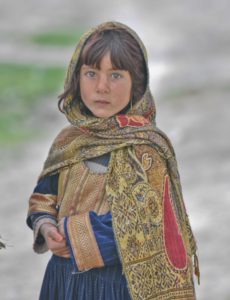 A study in Bangladesh showed that the majority of children engaged in prostitution were also exploited for pornography; while a police report from the Maldives flagged an increase in the production of pornography linked to homemade video clips posted on the Web. In Pakistan, Internet providers estimate that over 60 percent of Internet users visit pornographic sites regularly, many of whom, including children, do so from Internet cafés and clubs. In Pakistan, more than 60 % of Internet users visit pornographic sites. 20 % of Sri Lankan boys in the sex industry say they are compelled to work for economic reasons.
A study in Bangladesh showed that the majority of children engaged in prostitution were also exploited for pornography; while a police report from the Maldives flagged an increase in the production of pornography linked to homemade video clips posted on the Web. In Pakistan, Internet providers estimate that over 60 percent of Internet users visit pornographic sites regularly, many of whom, including children, do so from Internet cafés and clubs. In Pakistan, more than 60 % of Internet users visit pornographic sites. 20 % of Sri Lankan boys in the sex industry say they are compelled to work for economic reasons.
South Asian children are progressively connecting with child sex predators online. Firstgeneration cybernauts are finding in the Internet an extraordinary window on a world from where traditional South Asian communities were previously secluded. They may however have fewer instruments than peers in other regions of the world to defend themselves from online child sexual exploitation in a situation in which their own parents and teachers are often unaware of the risks. Poverty and marginalisation can create online victims of sexual exploitation even among children who are still denied access to Information and Communication Technologies.
The Laws and Policies governing Child Sexual Exploitation in South Asia
 The South Asian region is equipped with a dedicated tool to address crimes against children. This platform named SAIEVAC (South Asian Initiative to End Violence Against Children) is an inter-governmental mechanism governed by the SAARC body and has been operating since 2005.
The South Asian region is equipped with a dedicated tool to address crimes against children. This platform named SAIEVAC (South Asian Initiative to End Violence Against Children) is an inter-governmental mechanism governed by the SAARC body and has been operating since 2005.
In recent years, SAIEVAC has been stepping up its activities in the region to strengthen the legislation governing child sexual exploitation. Moderate amounts of improvement has been seen with Sri Lanka becoming a Pathfinder Country under the Global Partnership to End Violence against Children and the SAIEVAC countries working to develop National Action Plans on Child Sexual Abuse and Exploitation, and Online Abuse.
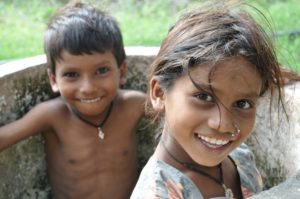 During these initiatives it was found that legislation on Online Child Sexual Exploitation needed to be seriously considered. With regards to the laws governing online child sexual exploitation in South Asia, India was found to have the most complete set of laws. The legislation of the other nations in the region were somewhat lacking.
During these initiatives it was found that legislation on Online Child Sexual Exploitation needed to be seriously considered. With regards to the laws governing online child sexual exploitation in South Asia, India was found to have the most complete set of laws. The legislation of the other nations in the region were somewhat lacking.
According to the report released by the International Centre for Missing and Exploited Children (ICMEC) on Child Pornography: Model Legislation & Global Review (2016); legislation related to online child sexual crimes is covered under the phrase ‘child pornography’ in most of the South Asian countries.
ICMEC’s (International Center for Missing and Exploited Children) global review on legislation relating to child pornography ranks India as the country meeting all 6 criteria set by the study followed by Bangladesh, Sri Lanka and Bhutan, while Pakistan, Afghanistan, Nepal, Maldives and Nepal fail to fulfill most of the criteria.
Conclusion
It can be considered that the South Asian region needs to find ways to better provide justice to victims, and awareness to children and other stakeholders so as to ensure that they have a carefree and happy childhood where the rights of every child; regardless of gender, race, religion or caste; are valued.

